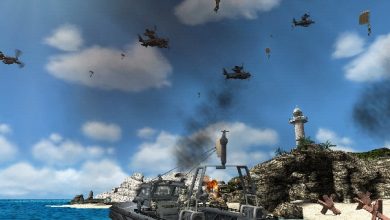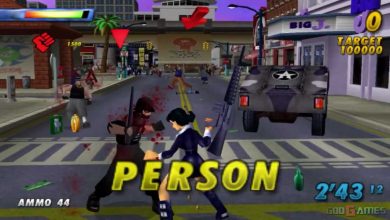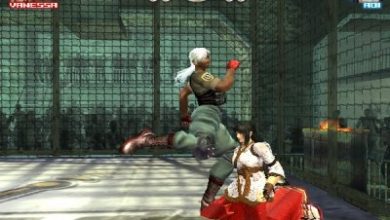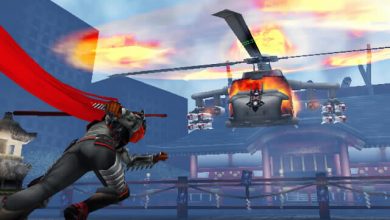Tekken 4 Review
Where’s the beef?!?
The Tekken series and I have quite a history together. The original was my first PS1 pickup, a perfect showcase for its first generation of titles. Tekken 2 and 3 were two of my favorite Playstation fighting games outside of the Tobal series (which you’ll all find out about soon enough). Hoping for lightning to strike twice, I again chose a Tekken title for a launch pickup when I bought Tekken Tag Tournament with my purchase of a PS2. While it kept the extensive roster and the entertaining extras of its predecessors, the lack of in-game innovation outside of the “tag team” addition (done much earlier, and better, I might add, by Capcom in their Vs. series) left me yearning for something new from Namco’s flagship series. While Tekken 4 does indeed provide a shot in the arm in the gameplay department, with a massively overhauled fighting engine and the addition of enclosed arenas with varied terrain, it lacks the little things that made the previous titles so much fun.
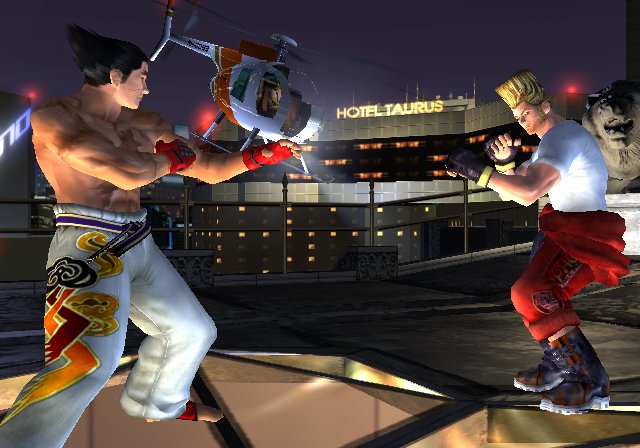
Tekken 4 centers around the Fourth King of the Iron Fist Tournament, called upon by Heihachi Mishima, the perennial psychotic megalomaniac ruling the Tekken universe. Truth be told, Heihachi is getting on in years (it seems as though one of his outfits is an adult diaper, though I guess it could be traditional sumo dress), and this tourney is his chance to steal genetic material from his kin, Jin and Kazuya. Up for grabs, once again, is his vast empire of riches, the Mishima Zibatsu, which attracts a handful of the world’s top fighters. Unlike most fighting games, Tekken always presents a storyline that you’ll give a damn about, through the inclusion of the series’ standard FMV endings. Newly added introductory storylines flesh out the plot and help you understand the motives for each characters entry into the tournament without having to dive into the instruction manual. The only complaint I really have with the plot this time around is that there isn’t enough of it, as the roster has been inexplicably trimmed to 18 characters, half the amount available in Tag Tournament, and even less than the last proper Tekken title.
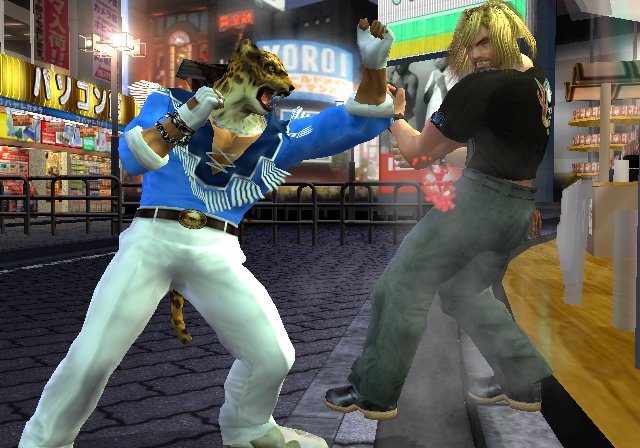
While Tekken 4 has made some extreme changes in the gameplay department, it does so without altering the feel of the series too much. The walled arenas are welcome to the game, though I wish there were more destructible elements outside of the rare statue or rail. Despite the bare-bones approach given to the stages in the game, which are for the most part, devoid of truly varied terrain (stairs don’t count, folks- I want something it hurts to fall off of), it’s still a welcome break from the boring “infinite space” of previous Tekken titles. The more drastic change is the increased emphasis on 3-D movement. Whereas pressing up and down in previous Tekken titles resulted in your character jumping or ducking, respectively, your character will now move towards the foreground or background. Although the in-close controls are made a bit clumsy as a result, I’d say it’s a positive addition that infuses some much-needed defensive depth to the series. A little bit of tweaking to these elements will be necessary to better incorporate them into Tekken’s already superb fighting engine, but I’d say that the major changes to the game are welcome ones.
While the PS1 Tekken titles set benchmarks for graphical quality, Tekken 4 is a little better than average in a genre that demands perfection. Animated facial movements have been added, though most fighting titles have added that ages ago. The stages aren’t very impressive either, though they suffer more from bland design than poor graphical quality. The music is mostly forgettable, though a few tunes stand out to put Tekken ahead of the fighting game pack in audio terms. Tekken falls behind, however, with a relative dearth of voice samples compared to most PS2 fighters. Even absolutely horrible voice acting in a fighting game (see Namco’s own Soul Blade/Calibur series) can serve only to deepen the experience, and it could’ve pushed Tekken’s already stellar storylines to the next level.
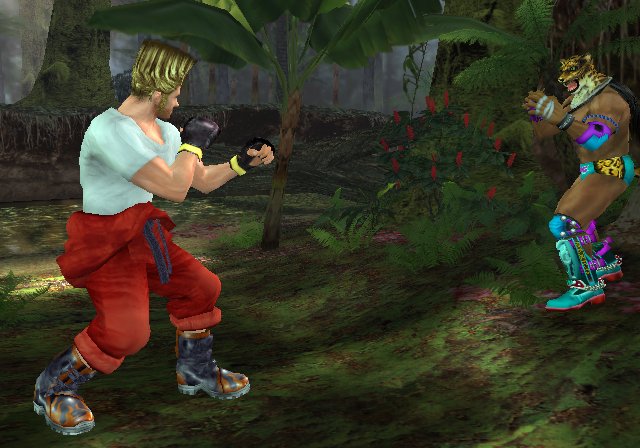
While Tekken 4 has been tiptoeing the line between great and simply average throughout the review, what ultimately causes it to fall into the pool of average fighters is the lack of extras that once made Tekken famous. Previous titles in the series offered unique minigames like Tekken Bowling and Tekken Ball, but all Tekken 4 has on the plate is Tekken Force, a rehashed update of Tekken 3’s similarly titled mode. With games like Virtua Fighter 4 and Soul Calibur 2 containing innovative and extensive single-player modes, now is not the time for subtraction. For what it’s worth, the additions to the Tekken fighting engine have put it among the best in gaming- right now, all it lacks are the entertaining extras its competitors currently offer.


